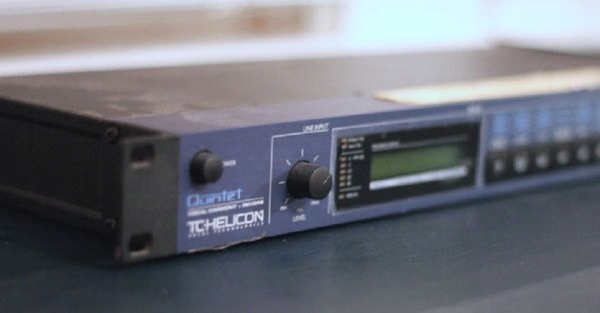
Pitch correction, what it really means? What is that? And vocoder,harmonizer… What about the vocoder and harmonizer? What’s it? How does it work?
Pitch shifting (pitch correction), and so the term “Harmonizer” quickly created its place into recording studios all around the world. The notion of overdubbing multiple voices harmonical, or multitracking the lead vocal to make a natural “doubling” result and backing voices became very well-liked.
A pitch shifter may be a device that raises or lowers the pitch of an audio signal. simple pitch changers raise or lower the note (pitch) by one or two octaves, whereas more refined devices offer a variety of internal modifications.
So, what does that got to do with the questionable harmonizers?
Harmonizers are some kind of a pitch shifters which mixes the modified pitch with the input pitch to form two or more note harmony.
From the very first point that individuals started recording sound, there’s forever been one factor that was the most vital: voice, you got to have it. Other than that there are plenty of various models of vocal harmonizers that you can get.
In the middle and late 70s, a piece of studio hardware which may be used to bring wrong notes into line is introduced. That hardware was the eventide 1745M (a digital delay module) and eventide H949 (a digital harmonizer). In 1975, H910 Harmonizer was the first affordable digital pitch shifters. Despite the vocoder’s popularity, in those days it fully was still distant from accessible. Artists like Moroder and Herbie Hancock were using this technology much before today’s producers. as an example, the Sennheiser vocoder was about $10,000 ($45,000 today) or more.
Within the 1980s, samplers became wide on the market and affordable and it completely was easy to “sample” a foul note and play it back while reducing it with a pitch wheel. and eventually, software came on within the 1990s that led to very easy manipulation of vocal pitch.
Many artists within the late ’90s, in addition, started using pitch correction in their live shows, setting the hardware to help in and fix live vocals.
The vocoders didn’t really begin its journey as a musical effect. Instead, within the 1920s, Homer Dudley at Bell Labs created a tool whose operate was to form it easier to transmit phone conversations over long distances by reducing bandwidth.
It, in addition, does a job during the second world war. Bell Labs created the vocoder in 1942 that enabled conversations between Churchill and Roosevelt to be harder to intercept. The vocoder scrambled the speech creating it nearly impossible for Germans to decipher. The disorganized speech would be improved on at the receiving end where it could be understood.
So while the vocoder wasn’t originally designed for musical functions it’s indeed created its name inside the world of music. The vocoder went through a motivating transition from world war device to musical impact. The German band referred to as ‘Kraftwerk’, was believed to be the very first musicians that used the harmonizer in their work. The band’s music was primarily electronic thus exploitation the vocal changer made lots of sense. Bob Moog and Wendy Carlos modified many synth models once finding out Dudley’s original device so as to build their own vocoder to be used on the Clockwork Orange soundtrack.
Many well-known musicians have used this device and a few of them are Phil Collins, Stevie Wonder, Herbie Hancock, Neil Young, Coldplay, Daft Punk and lots of innovative young artists.
But, not only do musicians use vocoders. It also has application in voice effects in alternative arts, TV shows, cartoons, animations, movies, video games, etc. usually for robots or talking computers.
But wait…how does it work?
The speech and its sound are typically shared into two aspects: pitch (the vibration of the vocal cords) and prosody (the modification of the pitch characteristics and further sounds, like sibilance, accomplished by varied movements of the mouth)
It’s getable to strip out the pitch and replace it with a specific pitch (in the case of a vocoder sometimes one controlled by a keyboard) whereas holding loads of the prosody data.
Simply you’re ready to take a pitch generated by a keyboard or totally different instrument and modify it with prosody characteristics from speech to make a fresh, voice-like sound. this can be primarily what a harmonizer does.
Vocal harmonizers, like sequencers, samplers, and onboard effects, have presently become customary choices of computer-based hardware and software system package synthesizers. have you ever tried one? irrelevant, whether or not it’s hardware or software system, I believe that, if there is nothing else that you just would really like to try and do with it, at least you’ll have tons of fun.
